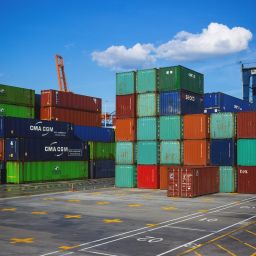Workforce Management Software for Greenhouse Operations: Cultivating Efficiency and Sustainability
Greenhouse operations play a crucial role in modern agriculture, allowing farmers to extend growing seasons, protect crops from adverse weather conditions, and optimize yields. However, managing greenhouse operations comes with its own set of challenges, including labor-intensive tasks, precise environmental control, and the need for sustainability in agricultural practices. To overcome these challenges and usher in a new era of efficiency and sustainability, many greenhouse operators are turning to workforce management software. This specialized tool offers a range of features and benefits tailored to the unique needs of greenhouse operations, streamlining tasks, empowering workers, and driving success in greenhouse farming. In this article, we explore the impact and advantages of workforce management software for greenhouse operations.
1. Efficient Labor Scheduling and Management
Greenhouse operations often require a large and diverse workforce to handle tasks such as planting, watering, pruning, and harvesting. Workforce management software simplifies labor scheduling by providing tools to create optimized schedules based on crop cycles, seasonal demands, and worker availability.
By automating labor management, greenhouse operators can ensure adequate workforce coverage, minimize downtime, and improve overall operational efficiency.
2. Real-time Environmental Monitoring
Precise environmental control is essential in greenhouse farming to create the ideal conditions for plant growth. Workforce management software often integrates with environmental monitoring systems, enabling greenhouse operators and workers to access real-time data on temperature, humidity, light levels, and CO2 concentration.
With real-time monitoring, greenhouse workers can respond quickly to any deviations from the optimal environmental conditions, ensuring crop health and maximizing yields.
3. Compliance and Sustainability Tracking
Greenhouse operators must comply with environmental regulations and sustainable farming practices. Workforce management software can automate compliance checks, ensuring that greenhouse operations adhere to regulations such as water usage, pesticide application, and waste management.
Additionally, the software can track sustainability metrics, such as water and energy consumption, carbon footprint, and waste reduction efforts, allowing greenhouse operators to monitor and improve their environmental impact.
4. Task Management and Tracking
Efficient task management is critical in greenhouse operations, where multiple tasks must be coordinated to optimize crop growth. Workforce management software offers task management and tracking capabilities, allowing greenhouse operators to assign tasks to workers, monitor progress, and ensure timely completion.
Automated task tracking streamlines operations, reduces manual record-keeping, and provides valuable insights into task completion rates and resource utilization.
5. Seasonal Workforce Management
Like traditional agriculture, greenhouse farming often relies on seasonal and temporary workers to meet peak demands. Workforce management software simplifies the onboarding and management of seasonal workers, from recruitment and orientation to tracking work hours and compensation.
Automated seasonal workforce management helps greenhouse operators optimize labor utilization, save time on administrative tasks, and seamlessly integrate seasonal workers into their operations.
6. Resource Allocation and Inventory Management
Greenhouses require careful management of resources such as water, fertilizers, and seeds. Workforce management software can help greenhouse operators allocate and track the usage of these resources efficiently.
By monitoring resource consumption and maintaining accurate inventory records, greenhouse operators can reduce waste, improve resource efficiency, and support sustainable farming practices.
7. Performance Analytics and Data-driven Decision Making
Data-driven insights are invaluable for greenhouse operators seeking to improve productivity and crop yields. Workforce management software provides performance analytics and reporting features, offering valuable data on labor productivity, crop growth rates, and overall greenhouse performance.
By analyzing this data, greenhouse operators can identify areas for improvement, optimize cultivation practices, and make data-backed decisions to maximize profitability.
Conclusion:
Greenhouse operations are at the forefront of sustainable and efficient agricultural practices, harnessing technology to cultivate crops in controlled environments. Workforce management software has emerged as a transformative solution for greenhouse operators seeking to cultivate efficiency, productivity, and sustainability.
From efficient labor scheduling and real-time environmental monitoring to compliance tracking, task management, seasonal workforce management, resource allocation, and data-driven decision-making, workforce management software offers a comprehensive suite of tools to streamline greenhouse operations.
The adoption of workforce management software is not just a technological advancement; it represents a strategic investment in greenhouse efficiency and sustainable farming. As the agricultural industry continues to embrace innovative solutions, workforce management software will play an instrumental role in shaping the future of greenhouse farming, empowering operators, and driving success in the quest for a more sustainable and abundant food supply.
















